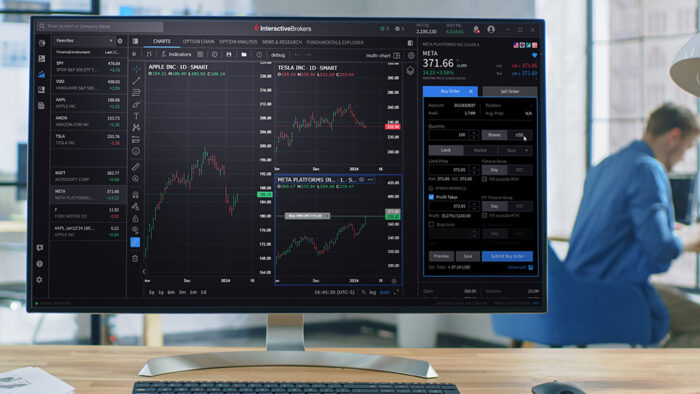Study Notes:
Growth investing offers the potential for substantial returns but comes with a high level of risk. What are some of the risks, and what are some popular strategies for managing these risks effectively?
Risky Business
Volatility in Growth Stocks
Growth stocks are often subject to significant price volatility, influenced by market expectations and sentiment. This volatility can lead to rapid price fluctuations, potentially resulting in losses for investors.
Market Uncertainty and Economic Factors
Growth investing is sensitive to market conditions and economic factors. Changes in interest rates, economic downturns, or shifts in investor sentiment can impact the performance of growth stocks. Keep an eye on the pulse of the market.
Regulatory and Legal Risks
Growth companies, especially those in innovative or emerging sectors, may face regulatory and legal challenges. Changes in regulations, compliance issues, or legal disputes can significantly impact their growth prospects and financial performance. Plus, watch the political climate, especially in election years.
Potential for Rapid Market Shifts and Disruptions
Industries and sectors experiencing rapid growth are susceptible to market shifts and disruptions. Technological advancements, changing consumer preferences, or competitive landscape transformations can quickly alter the growth trajectory of companies, posing risks for growth investors.
Strategies to Manage Risk
Diversify growth investments across multiple companies, sectors, and geographies to mitigate risk. Avoid overconcentration in a single stock or sector, as this can expose the portfolio to significant volatility.
Conduct in-depth research and analysis of potential growth companies. Evaluate their financial health, competitive positioning, earning patterns, growth drivers, and industry trends. Are there white elephants in the room?
Look for emerging trends, technological advancements, or disruptive innovations that can drive sustained growth. Focus on areas with potential for significant market expansion and demand.
Evaluate the capabilities and track record of a company’s management team. Strong leadership is crucial for sustainable growth and execution of long-term strategies.
Balancing risk and reward are critical in growth investing to achieve sustainable long-term success.
Understand that not all growth investments will yield extraordinary results, and some may underperform. Maintain a long-term perspective and avoid chasing short-term gains.
Develop a risk management strategy that aligns with your risk tolerance and investment goals. Conservative? Moderate? Aggressive? Define limits on the amount of capital allocated to growth investments and diversify across different stocks and sectors to reduce risk exposure.
Continuously learn from past experiences, including both successes and failures. Keep an investing journal. Apply these lessons to future investment decisions, refining your strategy over time.
Be adaptable and adjust your investment approach based on prevailing market conditions. Recognize that market dynamics can change rapidly, and investment strategies that worked well in certain periods may not be as effective in others.
One example is Nvidia Corporation (NVDA), named as a global leader in graphics processing units (GPUs) and artificial intelligence (AI) software, exemplifies a growth investment. Nvidia has demonstrated high growth rates, driven by the increasing demand for AI and high-performance computing across various industries, including gaming, automotive, and cloud computing. Even with the high-risk nature of investing in a company that heavily relies on technological advancements and market trends, Nvidia’s financial performance, competitive positioning, and management expertise make it a compelling growth story.
Here are more examples of trends and innovations heard in the media:
Sustainable Technologies
Companies like Tesla are pioneering sustainable technologies, such as electric vehicles and renewable energy solutions. These innovations not only address environmental concerns but also create new market opportunities and drive growth by offering innovative products that meet the growing demand for sustainable solutions.
Financial Technology (FinTech)
FinTech companies have disrupted the traditional financial services industry by offering low-cost, accessible investment platforms. This innovation has democratized access to investing, attracting a new generation of investors and driving growth in the financial services sector.
Digital Transformation
Companies like IBM and General Electric are leveraging digital technologies to transform their operations, offering new services and products that cater to the evolving needs of consumers and businesses. This shift towards digital platforms not only enhances operational efficiency but may also open new revenue streams.
E-commerce and Online Retail
Amazon and Alibaba have revolutionized the retail industry by leveraging the internet to offer a vast selection of products at competitive prices. This disruptive innovation has transformed consumer shopping habits, making online shopping the preferred choice for many consumers worldwide.
Streaming Services
Netflix and Spotify have disrupted the entertainment industry by offering on-demand access to a vast library of movies, TV shows, and music. This innovation has changed the way consumers consume media, leading to significant growth in the streaming services sector.
Collaborative Commerce
Companies like Airbnb and Uber have transformed traditional industries by leveraging technology to create new business models. Airbnb has disrupted the hospitality industry by offering a platform for people to rent out their homes or rooms, while Uber has revolutionized the transportation sector by providing a convenient and affordable ride-hailing service.
Cloud Computing
Amazon’s AWS and Salesforce are prime examples of companies that are disrupting the software industry by offering a cloud-based services and customer relationship management (CRM) systems.
These examples illustrate how emerging trends and disruptive innovations can drive sustained growth by creating new market opportunities, changing consumer behaviors, and offering innovative solutions to existing problems.
By understanding the nature of growth investing and employing strategic approaches, investors may navigate the challenges to increase their chances of success. Balancing risk and reward require setting realistic expectations, managing risks, learning from experiences, and adapting to market conditions. While growth investing carries uncertainties, those who approach it with diligence and a long-term perspective may isolate growth opportunities.










